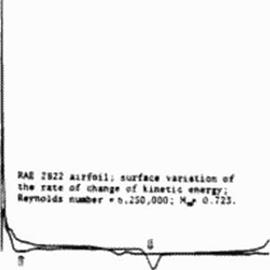Surface Flow Data Specification
Once the global aerodynamic parameters (inlet and exit pressures, temperatures, and flow angles) have been specified, the next objective is to determine the best way to distribute aerodynamic quantities on the yet unknown configuration. Since the inverse shape design is based on the specified ("desired" or “target’ ) surface pressure distribution, the common dilemma is the choice of the "best” surface target pressure Specifically, it would be desirable to determine the best pressure distribution on the surface of the yet unknow n configuration so that the acrody nam – ic efficiency is maximized by minimt/.ing all possible contributions to the entropy generation in the entire flow-field. From the specified surface distribution of flow-field parameters it is possible to discern only certain aspects of the boundary layer. It is well known that the separated boundary layer significantly increases flow-field vorticity and. consequently, the viscous dissipation function, entropy generation and aerodynamic drag To minimize these effects the desired surface pressure distribution can first be cheeked for possible flow separation before it is further used in the aerodynamic shape inverse design A very fast method for detecting (low separation has been recently proposed [ 141J. It is based on the fact that the rate of change of flow kinetic – energy reaches Us minimum at the separation point. The kinetic energy can be calculated from the surface pressure distribution by assuming that pressure docs not change across a boundary layer. The flow separation detection code is short and very simple since it involves algebraic and analytic expressions only. Thus, the surface pressure distribution, either specified by the designer or obtained while using an optimization process, can be quickly cheeked for possible flow separations (Figure 69) before it is actually enforced.
 |
 |
Figure 69 Detection of flow separation locations from the specified or measured surface pressure distribution [141]. Arrows point at experimentally found locations of the flow separation points. Our code predicts separation to occur at the minimum of the curve representing the local rate of change of surface flow kinetic energy.
This a pnori checking can be automatically followed by the minor modifications of the local surface pressure distribution with the objective of moving the flow separation points further downstream. The updated surface pressure distribution can be re-checked for the locations of the flow separation points. This checking/modiftcaiion procedure can be repeated until the separation points cannot move downstream any more This procedure is extremely fast since it is accomplished without a single call to the flow-field analysis code.











